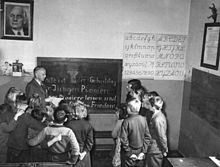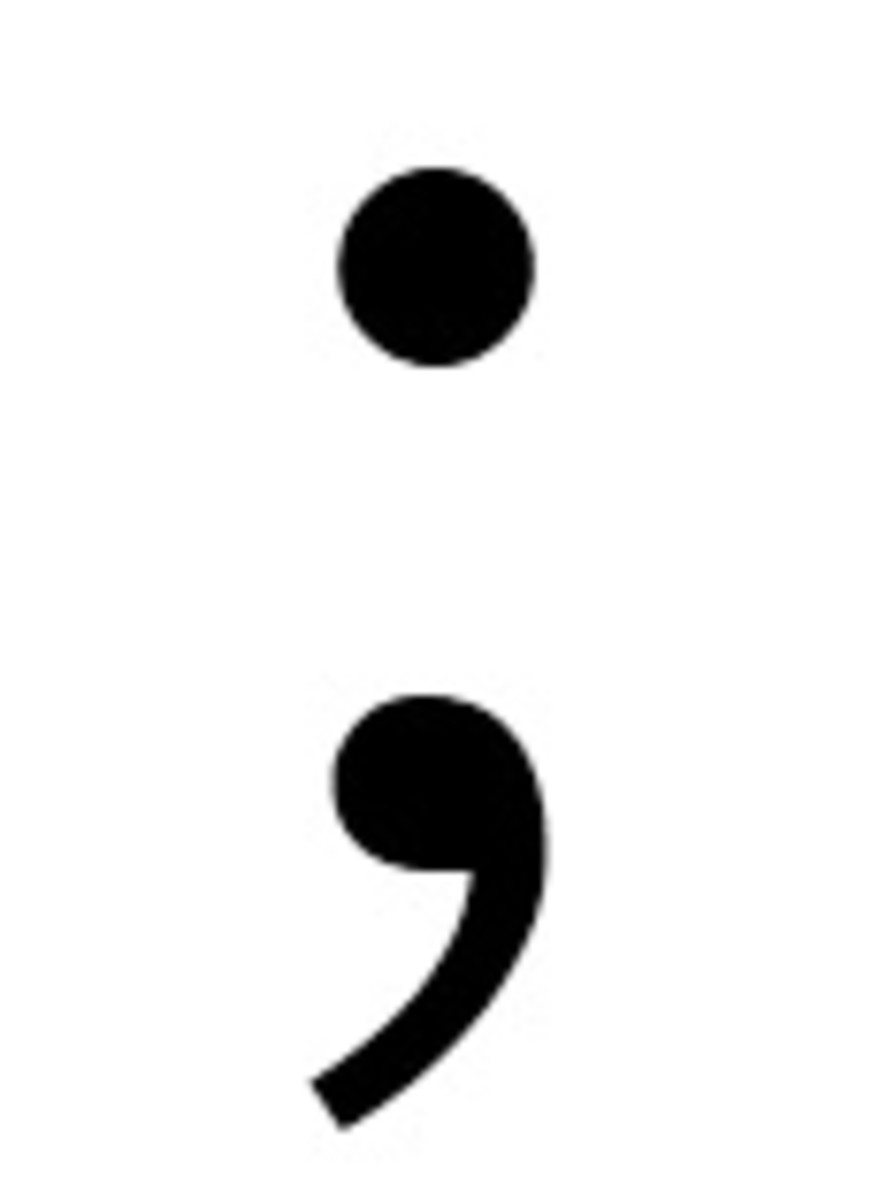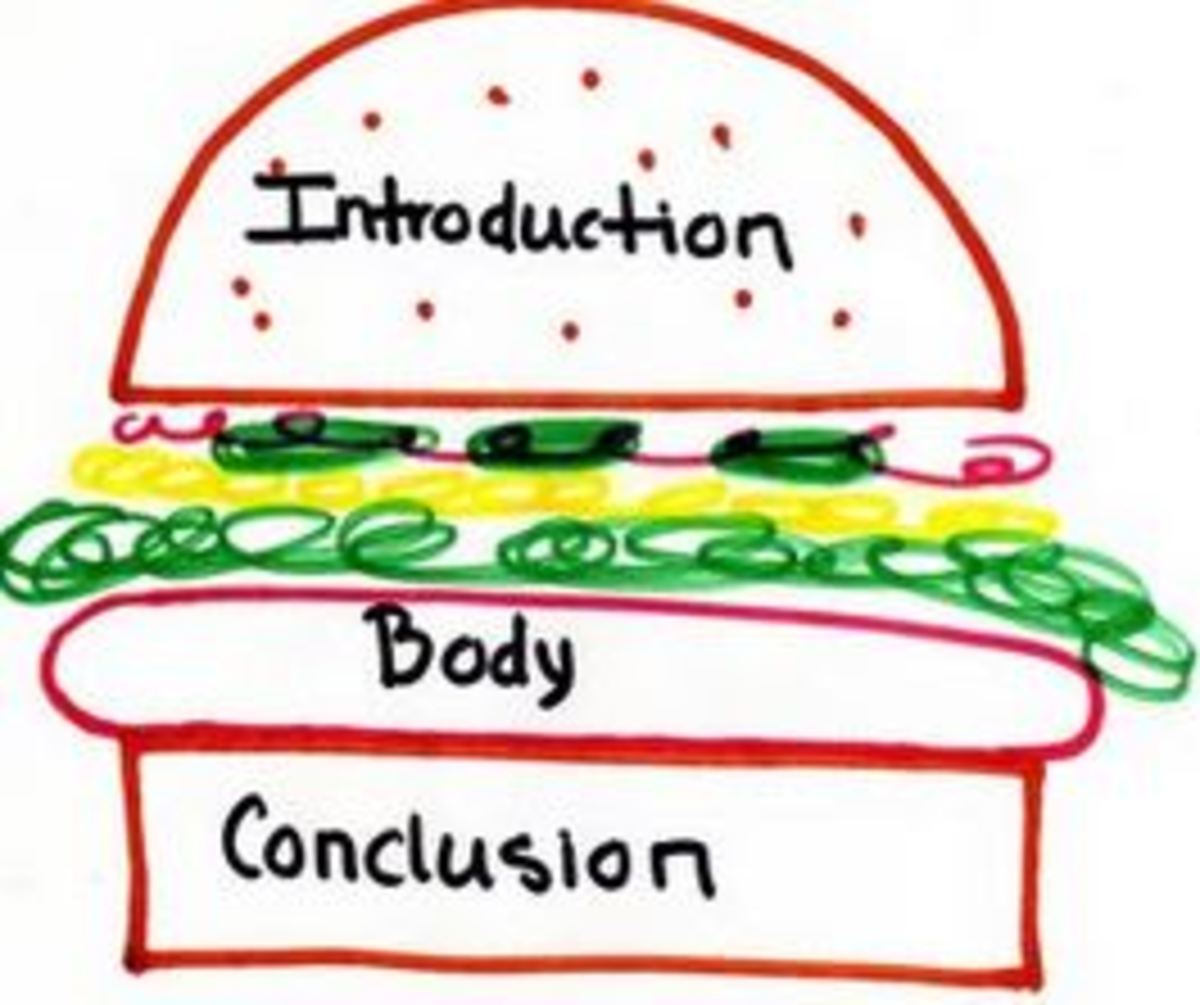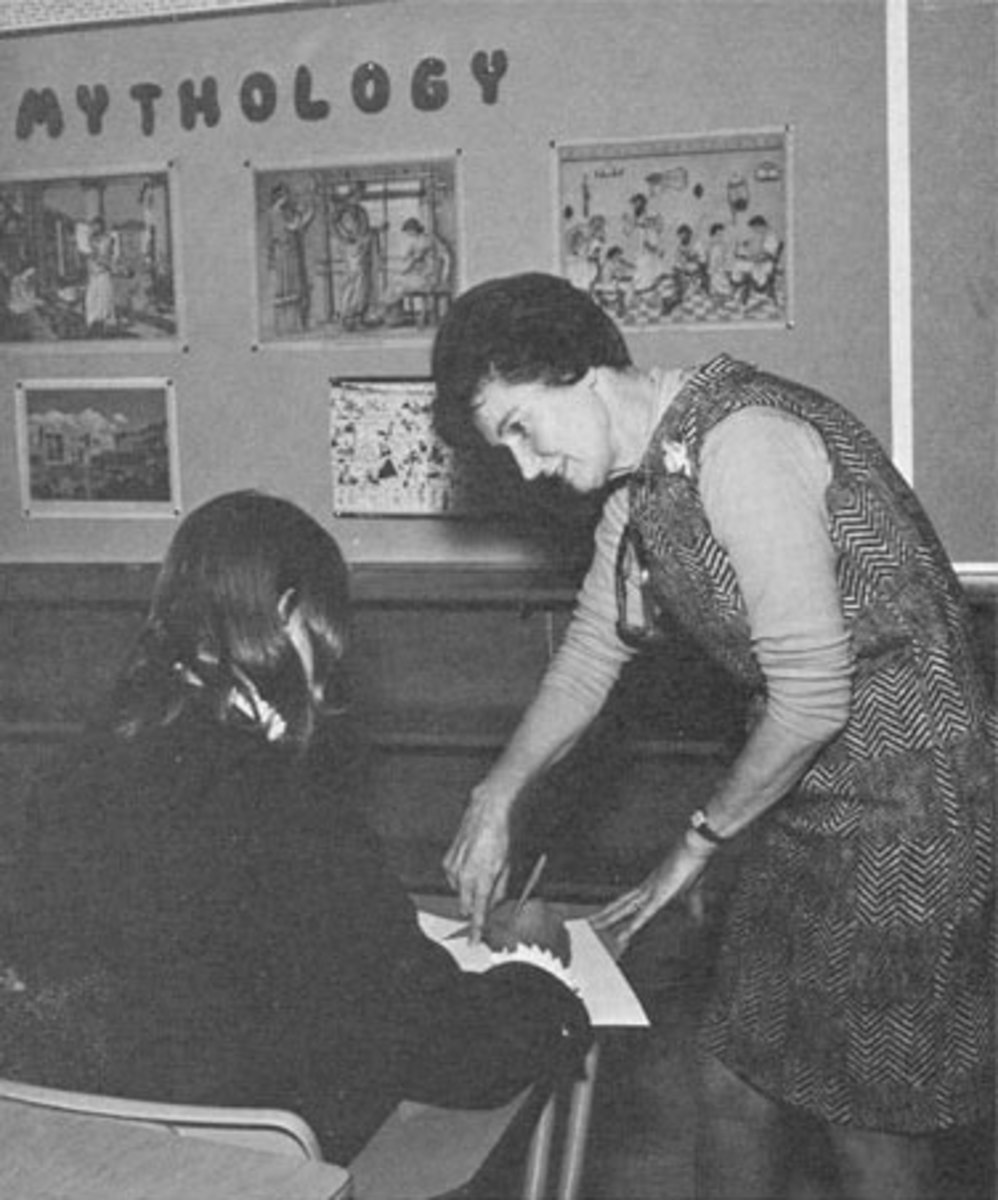"Grammar Instruction Methods, Unconscious Knowledge, and Effective Writing"
Educator and Children

Introduction: "Unconscious Knowledge"
Teachers of grammar can play a crucial role in helping students write more accurately and powerfully. Through diligent and intelligent labor, they can “exploit children’s considerable unconscious knowledge of English grammar—that huge body of rules they began internalizing well before school age” (Rubba 2)—and produce effective writers. Sadly, as Gribbin notes, “too many teachers fail to recognize Grammar 1—‘our unconscious knowledge’—and lose opportunities for building upon the knowledge their students already possess” (qtd. in Martinsen 123). Yet, there is hope. If educators can reverse this trend and then learn how to develop in their students other skills that will augment that intuitive knowledge, perhaps the latter may take great strides toward realizing their fullest potential. However, before students can reach this lofty goal, instructors must first discover writing-related grammar instruction that really works. Once they have decided upon sound pedagogical solutions, they should then put forth every effort to ensure that students benefit substantially from their discoveries.
Teachers should adopt an eclectic approach to writing-related grammar instruction that will use sound methods aimed at developing three essential skills—analytical, rhetorical, and emotional—that would enable full exploitation of the pupils’ “unconscious knowledge.”
Diagramming
view quiz statisticsIs Diagramming Beneficial?
Do you think diagramming sentences is a useful method?
Analytical Methods
view quiz statisticsPoint #1--Develop Analytical Skills
Let’s address the first point. Teachers have the responsibility to motivate students to strive for excellence in their use of the language. In order to achieve this level of competence in their pupils, instructors must work to mature the former’s use of their mental equipment. Critical thinking and analytical skills constitute essential tools for any student to possess, regardless of what discipline he or she chooses to pursue for his or her life’s work. Thoroughly instructed educators must step into student lives and use effective methods to teach them more than a minimum of grammatical knowledge in piecemeal fashion. Rubba strongly advises that “children need to be supplied . . . with the wherewithal to think critically, from a scientifically sound basis . . . .” (3).
Lynn Sams’ highly informative study provides such a basis by developing an extremely practical method that helps students think critically. She agrees with Rubba that the “in-context approach” to grammar instruction is ineffective. In fact, she labels it “fundamentally flawed,” because “it treats grammar as an isolated set of rules, thereby considering the written product under review as the only relevant context for grammar instruction. It completely ignores the context from which rules derive, the language system itself” (63). She recognizes the same challenge that Dean faced when the latter realized that she and her students “didn’t have a common vocabulary” with which to discuss composition problems (Dean 86).
Drawing upon her high school teaching experience that showed her that students needed help to “develop the concept of a sentence,” Sams conducts “concept attainment lessons.” These “warm-up activities” aim to teach students “how to sort through all the accessory words in a sentence to pinpoint the ones conveying the main idea.” Through this process of analyzing “all possible permutations of subjects and verbs in stripped subject-verb constructions,” students learn to recognize the forms a core idea can take (58). Sams teaches them to analyze sentences “through a process of questioning that reveals the precise relationship of every part to the whole,” and to “record their steps on paper in . . . a sentence diagram . . . that provides a visual display of material that reinforces the concepts being acquired.” In short, the diagram helps the student see structure, i.e., how all the parts of the sentence relate to one another. She quickly points out that teachers should not use diagrams as ends in themselves, but as supports to sentence analysis (59).
Sams clearly delineates the process of questioning that she follows in her approach to sentence analysis. Positing that “language is a system of relationships,” she deduces that “in any given sentence every word answers a question about another word, and every structure (group of words) answers a question about another word or structure.” Her first step involves providing students with simple sentences so that they become familiar with subjects and verbs. “Once they identify the main verb phrase in a sentence,” she says, “everything else falls into place.” The students increase their ability to adapt “meaning to structure and structure to meaning” (59). Sams inserts other forms—adjectives, adverbs, etc.—one at a time into these simple sentences, and makes students work with them until they are able to draw various conclusions about how these forms function in the sentence. She builds up to compound-complex sentences by the end of the year (60).
Not only does Sams find that regular practice in analysis enhances student understanding of sentence patterns, she also discovers that it “accomplishes in depth what sentence combining only touches upon.” While the latter method helps students identify some sentence-expanding structures, the analysis technique of questioning provides students with the insight into why they should choose one structure over others and instills them with “an understanding of the language system as a whole” that gives them control over the structures they need (61). Sams illustrates her procedure in some detail, showing how students who acquire this understanding become more aware of a multitude of options in writing. Included in these options is the ability to “see” links between ideas that “impacts cohesion, arrangement, and invention.” Those who through analysis can determine how ideas relate to one another will become the most precise writers (62).
Her conclusions strongly suggest that teachers should implement the following methodologies: (1) the inclusion of rigorous student practice in the analysis of “relationships between words, phrases, clauses, sentences, paragraphs, sections, and the work as a whole”; (2) the reinforcement of “their understanding of these relationships through extensive reading, writing, and informed revising”; (3) the “implementation of a sequenced approach to grammar instruction that is designed to build students’ competence gradually”; and (4) the alignment of “instructional methods with the nature of the subject matter” (64). Sams’ article makes a convincing case for the use of sentence analysis methodology in the classroom, and deserves serious consideration.
Teacher and Pupils

Point #2--Develop Rhetorical Skills
Not only does Sams find that regular practice in analysis enhances student understanding of sentence patterns, she also discovers that it “accomplishes in depth what sentence combining only touches upon.” While the latter method helps students identify some sentence-expanding structures, the analysis technique of questioning provides students with the insight into why they should choose one structure over others and instills them with “an understanding of the language system as a whole” that gives them control over the structures they need (61). Sams illustrates her procedure in some detail, showing how students who acquire this understanding become more aware of a multitude of options in writing. Included in these options is the ability to “see” links between ideas that “impacts cohesion, arrangement, and invention.” Those who through analysis can determine how ideas relate to one another will become the most precise writers (62).
Her conclusions strongly suggest that teachers should implement the following methodologies: (1) the inclusion of rigorous student practice in the analysis of “relation-ships between words, phrases, clauses, sentences, paragraphs, sections, and the work as a whole”; (2) the reinforcement of “their understanding of these relationships through extensive reading, writing, and informed revising”; (3) the “implementation of a sequenced approach to grammar instruction that is designed to build students’ competence gradually”; and (4) the alignment of “instructional methods with the nature of the subject matter” (64). Sams’ article makes a convincing case for the use of sentence analysis methodology in the classroom, and deserves serious consideration.
Not only should instructors use good methodology to aid students in their development of critical thinking and analytical skills, but they should also introduce ways to help them make better rhetorical choices in their writing projects. Martha Kolln provides a detailed explanation of the concept of “rhetoric”:
Rhetoric means that your audience—the reader—and your purpose make a difference in the way you write on any given topic. To a great extent, that rhetorical situation—the audience, purpose, and topic—determines the grammatical choices you make, choices about sentence structure and vocabulary, even punctuation. Rhetorical grammar is about those choices (2).
Teachers must prepare themselves as resource persons who will be able to present their students with valuable, wise direction, as the latter tackle challenging writing assignments in which they must choose their words in such a way that they have the desired effect. Lending concise, cogent support to this view, Rudolph Flesch writes:
If you want to learn how to write, you need exact information about what kind of language will fit what kind of audience. And scientific data about the psychological effects of different styles. And handy, usable facts and figures about com-mon types of words, sentences, and paragraphs. And knowledge of the results achieved by various writing techniques. In short, you need a modern scientific rhetoric that you can apply to your own writing” (24-25).
Van Horn quotes Noguchi’s view that “the teaching of grammar may be the most beneficial to style, which he defines as both mechanics and ‘options that lead to effective communication of content’” (69). She highlights “exercises in transformation and self-questioning” as categories that can help writers build upon what they inherently know about language as they refine their writing” (69).
Besides using the techniques of transformation and self-questioning, certain instructors have found other methods to help students make better rhetorical choices. After dropping grammar units from her curriculum, Dean rediscovered classical rhetoric and experimented with it in her classes (86). “Revived classicism,” as Glenn terms it, “stresses that grammar helps with sentence structure and analysis, thereby making writers aware of stylistic options for various rhetorical occasions” (qtd. in Devet 14). Classicism’s method—sentence imitation—endeavors to teach grammar without using that “nasty” terminology. Dean uses model sentences or invents them on the spot, and asks her students to imitate their structure. This activity involves the students with sentence style and offers them a way “to work with language, to consider different ways of expressing an idea, and to begin to understand that many options for expressing an idea or thought exist—and that they had the ability to work to find more effective constructions” (87). Later, Dean teaches her students about sentence construction, listing a series of sentences and asking them to choose one for analysis. The students then “write all the single-idea sentences they can find in it” (88). She states that “this exercise gives us an opportunity to talk about how we innately know how to embed in certain ways, so much so that sometimes we don’t even realize that we are doing it” (89). Dean hastens to add:
Though these activities raise students’ awareness of the power of language and increase their ability to create stylistically improved sentences, they weren’t meant to be isolated from the students’ writing. They were intended to help improve writing, so, when students are working on a multi-draft essay, I start to incorporate the sentence practice into revision (89).
Thus, her method follows neatly in the train of providing grammar training in the context of writing—a crucial procedure to which teachers must carefully adhere—which builds upon the intuitive knowledge of her students. Dean’s approach can also complement direct grammar instruction techniques (Sams 64).
Neman suggests another valuable method she has found that has helped her to “induce students to care about errors and other stylistic problems” (237). Before assigning a grade to compositions, she requires her students to correct errors circled on their compositions. This technique motivates writers to put forth extra effort in incidental grammar study, especially if they do not know how to make things right. Not forcing students to research their grammar books for answers simply makes it easy for them to “slide by” and not realize improvement (238).
Martinsen also recognizes the need to force writers to take the rules of grammar and use them in their own sentences. She, however, approaches the task in a different, even refreshing way. Instead of assigning the blame to students for not knowing how to apply grammar to their writing, she places the responsibility upon instructors. Citing Vavra, she writes, “Unless we help students to identify—in their own writing—the various grammatical constructions about which we talk, we might as well keep silent” (qtd. in Martinsen 125). Teachers should take into account the intuitive knowledge of their students, and teach more grammar in the context of their writing and speaking (126).
Most Important Skill
Which skill is most important: analytical, emotional, or rhetorical?
Point #3--Develop Emotional Skills
Not only can teachers of grammar encourage their students to make better rhetorical choices in their writing assignments by using delayed grading and sentence imitation, they can also help them grow emotionally by building up their confidence in their communication skills. Bolstering the student’s confidence in his/her ability to communicate on paper ranks as one of the most crucial tasks that teachers can undertake. Instructors can increase pupil confidence in his own abilities by using methodologies that will demand considerable effort from the student.
Alvin Brown, addressing “last chance” community college and private business school students, first lays the foundation by aiming to change beliefs and attitudes. He emphasizes “how vital English grammar is in every phase of future academic and business careers.” His earnest class demeanor immediately raises student expectations and obligations, and establishes him as their mentor, not their “buddy” (98). Brown also works to eradicate misconceptions both from the student’s mind and from his own mind. For example, he demolishes the idea that writing proper grammar is a skill meant only for the elite (98). When ordinary, but motivated students understand that businesses expect employees to possess this ability, and that a deficiency in this area may well eliminate them from consideration for a job, they begin to apply themselves more diligently to their studies (98-9). As for changes on the instructor’s part, removing negative attitudes about teaching grammar will go a long way toward enabling him to build confidence in his/her students (99).
After establishing grammar’s importance in achieving life goals, Brown emphasizes that educators must not skimp when actually teaching the discipline. He asserts that “teaching grammar . . . must be thorough and intense—total immersion” (99). Not only does he recommend intense concentration on salient grammatical issues alone rather than on peripheral topics, but he also helps students clear difficult hurdles by offering topics in segments rather than using the “dump truck” method, which tends toward frustration. Secondly, Brown uses innovative methods—primarily mnemonic aids—to increase student interest and confidence. Finally, he employs oral question-answer reviews, short written pre-tests, and student self-grading. The latter method—self-grading--often produces phenomenal results. He writes, “As students rectify their previous mistakes, this subsequent realization of self-improvement literally and figuratively brings forth smiles upon all faces” (100). When teachers must correct grammatical errors, it matters a great deal how they do it. Red-marking every mistake surely confuses student psychology, decreasing their confidence in the process; educators should avoid such “careless indifference” “like the Plague” (Martinsen 124).
Johanna Rubba also recognizes the importance of immersion in order to build student confidence. While commending the United Kingdom’s Department for Education and Employment (DFEE) book, National Literacy Strategy: Grammar for Writing, for maintaining “high expectations for all children, while employing teaching methods that boost children’s confidence that they can attain these” (Rubba 1), Rubba strongly suggests that teachers should avoid using the “minimalist” approach—“teaching only those grammar points which are problematic in the children’s writing, rather than a comprehensive exploration of English grammar” (2). She questions whether “a program which tackles only a selected subset of grammatical concepts gives students confidence and skill in handling . . . grammatical terminology.” (3). As stated earlier, Rubba’s approach includes “connecting similar grammatical points to each other in the curriculum sequence, and covering more content” (3). She wishes to see teachers take advantage of the opportunities to connect sentence-level grammar to text structure. Her article offers several ways in which students can improve their sentence-text connections (4). It is clear that enabling students to develop into confident manipulators of the language stands as one of the most wonderful benefits of the teaching profession.
Most Neglected Resource
view quiz statisticsSummary
Advocating teaching more grammar rather than less does not appear to be the majority opinion among linguists/researchers. The clever paradox “less is more” oftentimes reflects a sound procedure for people to follow in various arenas of life. Especially when working with children, teachers should take care that they challenge, yet not overload young minds. Sometimes, however, this concern goes too far; educators coddle students, fearing system shutdown. Unintentionally, they short-circuit the connection and the free flow of data. Sensitivity to student intake capacity is one thing; delimiting pupil potential and kinetic energy is another. Lacking sufficient stimulation, students suffer incalculable developmental loss. Therefore, instructors should proceed with caution (but surely they must proceed), and feed students as much as they can handle, using a variety of methods.
This paper has highlighted various pedagogical techniques from differing approaches that have successfully enabled students to graduate to higher levels of achievement in grammar and writing. Sams’ “concept attainment lessons” with their emphasis on sentence analysis through a process of questioning proved to be stimulating exercises aimed at helping students develop analytical thinking skills. Merging these increased abilities with the pupils’ innate knowledge of the language will certainly go a long way to producing more effective communicators.
Providing writers with transformation, self-questioning, sentence imitation, and self-correction skills, as Van Horn, Dean, and Neman have done through their approaches to writing-related grammar instruction, will help students improve the quality of their language use. Martinsen’s weighty admonition that teachers should acknowledge fuller responsibility in the task and learn to take advantage of unconscious knowledge in order to develop student rhetorical abilities is a startling point. Nonetheless, it must itself accept a caveat. However “old-fashioned” the concept may be, parental accountability should hold greater sway than it does. Parents should also shoulder more responsibility to educate their children, even if it is only through consultation with the instructor.
Finally, Brown’s demanding position on student and teacher attitudes toward grammar study, and his and Rubba’s insistence on immersion in the practice of the discipline stand out as essential ingredients in the construction of their pupils’ confidence level. The attitude of a careless, apathetic participant on either side—teacher or student—will surely elicit disastrous results for the whole grammar/writing enterprise/venture. Every learner must come to the task of becoming a more effective communicator determined to use whatever he “brings to the table”—innate language skills included—to immerse himself in the work until he achieves the goal. Confidence will increase as more success is realized.
Educators must choose between two portentous options: (1) Allow a slackening in all-around effort, resulting in mediocre, stunted development in student performance, or (2) consistently implement this methodological approach over an extended period, purposing to enhance student achievement—an approach that cannot but meet with laudable success.
Teachers should adopt an eclectic approach to writing-related grammar instruction that will use sound methods aimed at developing three essential skills—analytical, rhetorical, and emotional—that would enable full exploitation of the pupils’ “unconscious knowledge.”
© 2015 glynch1








